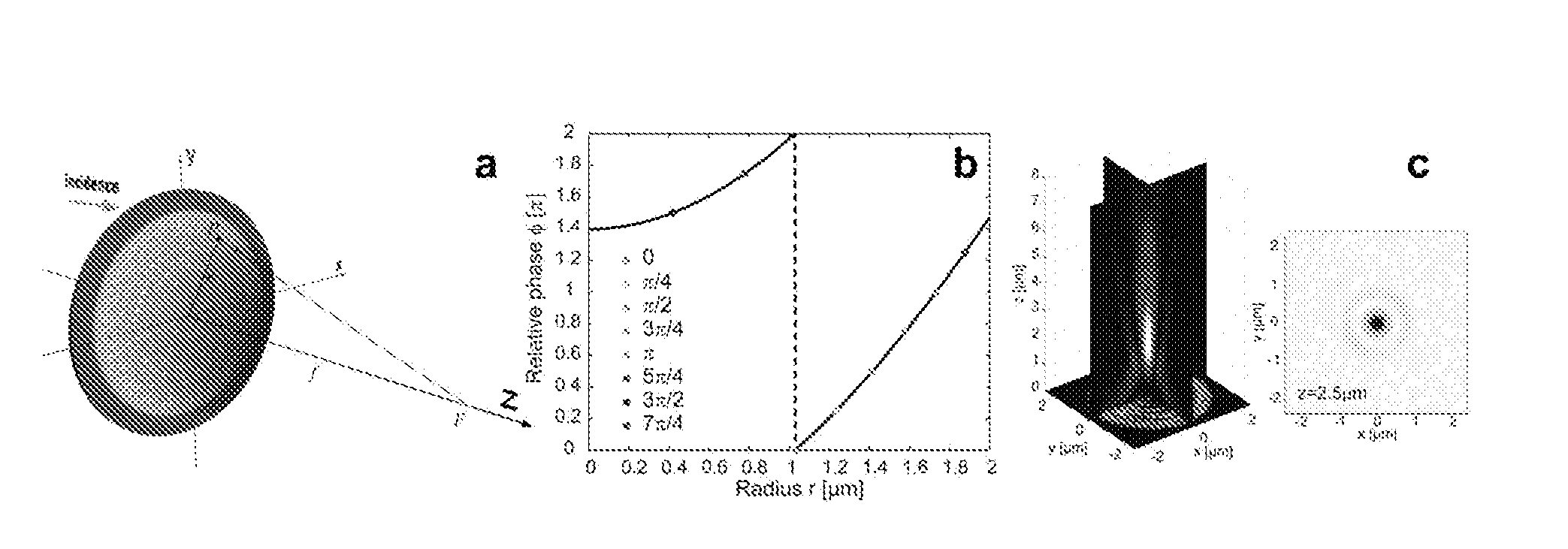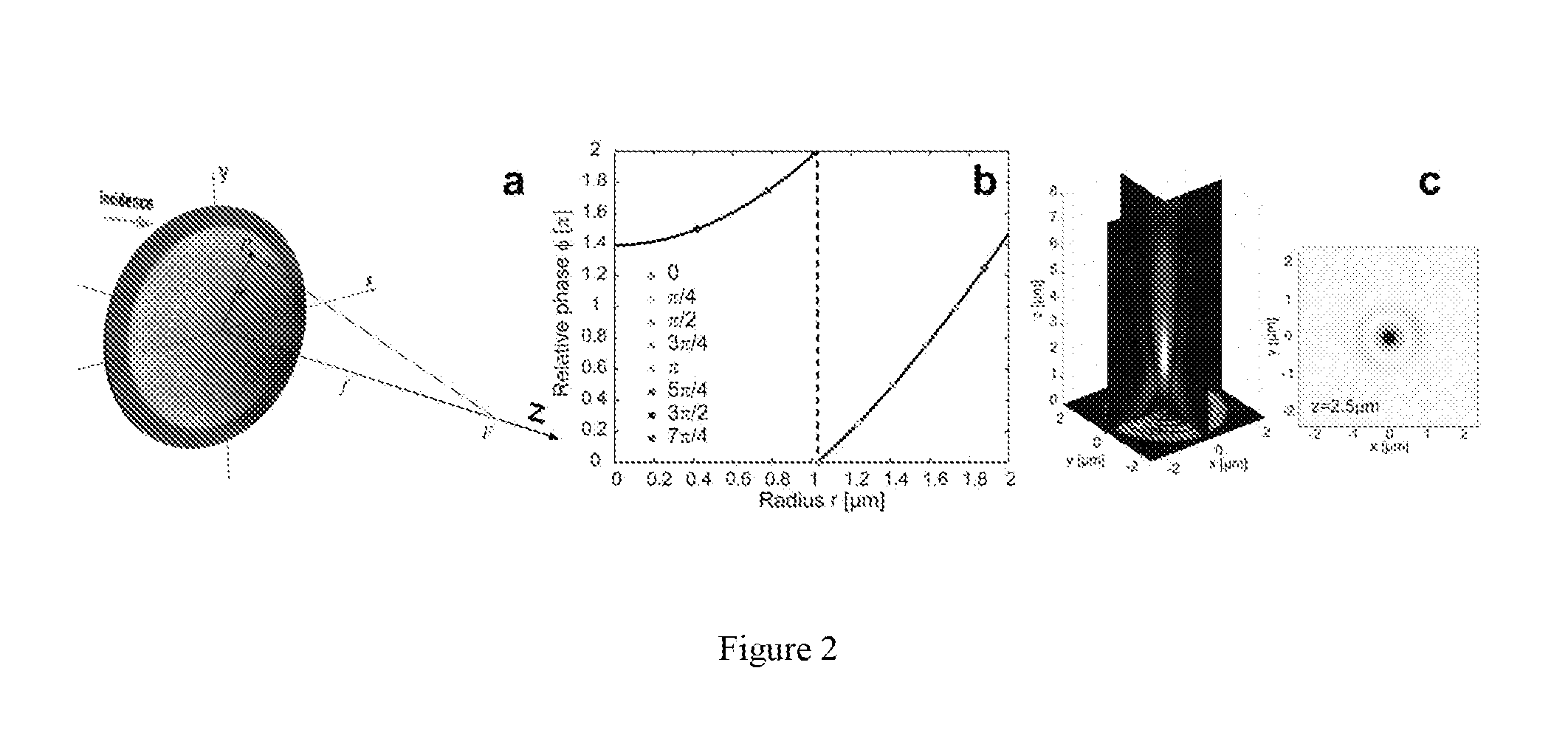Ultra-thin, planar, plasmonic metadevices
a meta-device, ultra-thin technology, applied in the field of planar devices, can solve the problems of limited phase control, difficult to make devices with a large aperture and a short focal length, and limited light bending strength in such a system, so as to achieve the effect of controlling the focal length of each devi
- Summary
- Abstract
- Description
- Claims
- Application Information
AI Technical Summary
Benefits of technology
Problems solved by technology
Method used
Image
Examples
Embodiment Construction
[0016]In contrast to conventional nano-antennas, the presently claimed device and method employ an inverted design built on Babinet's principle. That is, instead of metallic nano-antennas the claimed invention uses a set of similarly shaped nano-voids (Babinet-inverted, or complementary, nanoantennas) milled, or perforated, in a thin metallic film. Such a design provides a significantly higher signal-to-noise ratio. The nano-voids are arranged in arrays, or patterns, to create a planar plasmonic metadevice in order to much more efficiently focus or diffract (i.e. change the phase and the magnitude of) the incident light. In contrast to the near-IR device with focusing distances on the centimeter scale, the presently claimed plasmonic metadevices are very small in size (a few micrometers). Additionally, the present metadevices have an extremely strong focusing ability, with focal lengths of only a few micrometers and very large effective numerical apertures (NAs). Additionally, the m...
PUM
 Login to View More
Login to View More Abstract
Description
Claims
Application Information
 Login to View More
Login to View More - R&D
- Intellectual Property
- Life Sciences
- Materials
- Tech Scout
- Unparalleled Data Quality
- Higher Quality Content
- 60% Fewer Hallucinations
Browse by: Latest US Patents, China's latest patents, Technical Efficacy Thesaurus, Application Domain, Technology Topic, Popular Technical Reports.
© 2025 PatSnap. All rights reserved.Legal|Privacy policy|Modern Slavery Act Transparency Statement|Sitemap|About US| Contact US: help@patsnap.com



